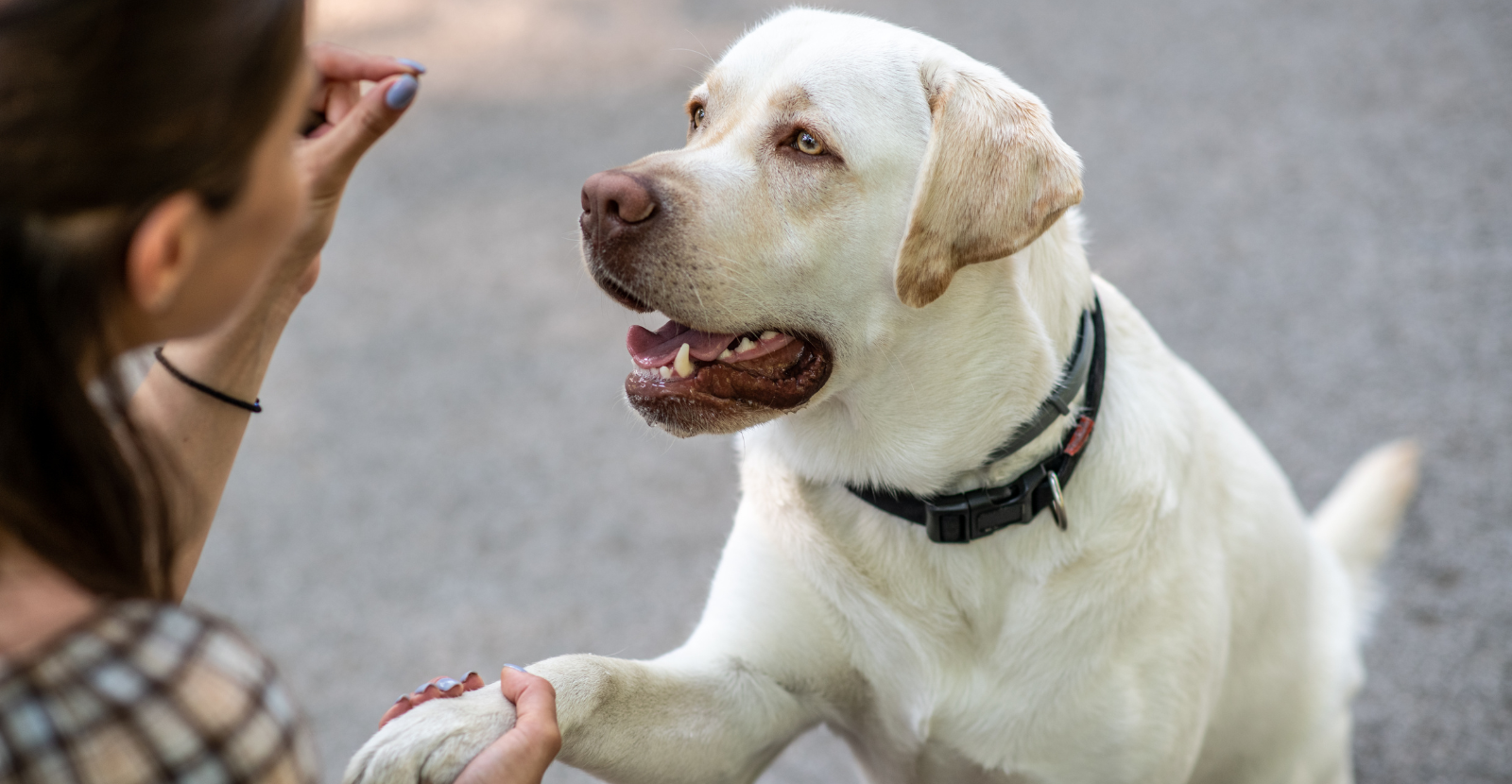Every month, we highlight a popular dog breed at risk for arthritis. This month, we are focusing on Siberian Huskies. For many reasons, but also, we have a new Husky puppy that is part of the Parnell Living Science family and it gives us a great reason to share the best puppy pictures EVER! That said, Huskies are a fascinating breed. Read all about Siberian Huskies, why we love them and learn some interesting facts about them, including why their eyes are so blue and they are at risk for arthritis.
First, let's first meet the adorable Akela! His name is pronounced "Uh-kee-luh" named after a wolf from The Jungle Book, which means "leader of the pack." This is a perfect name for a Husky because they are natural pack dogs. There are many great things about bringing a pack dog home like this Husky. We all fell in love with Akela, and he’s only 6 months old! He is one of the newest members of our Parnell Living Science family. His fur-mom, Lauren, already has him on Glyde® Mobility Chews as a preventative for arthritis. more on that later. First, behold the beautiful Akela!

Thanks to Lauren for sharing these great images of her sweet Siberian Husky!
Top 5 Reasons We are IN LOVE with Huskies!

Huskies are some of the most beautiful dogs out there. Their lovely well-furred coats, striking eyes and wolf-like appearance makes them hard to resist. When they look at you, it's as if they are staring into your soul with those big beautiful eyes. However, if you do not like fur, you may not like these gorgeous dogs because they have a lot of it. Siberians have a double coat: an undercoat and guard hair. The undercoat is shed twice a year, and it is important to continually “blow out” the old coat with a brush.

Pack dogs know their place.
When you add a Husky, you are adding a pack dog. It is in their nature to understand the social order of the family and they know right where they fit in. This innate ability to know where they stand means they are naturally a good dog for families. However, if there are weaker personalities in the family, these Huskies will take charge. The key is to be the leader of your pack, and the Husky will fall right in line. Another benefit of being in the pack is they are easy to train.
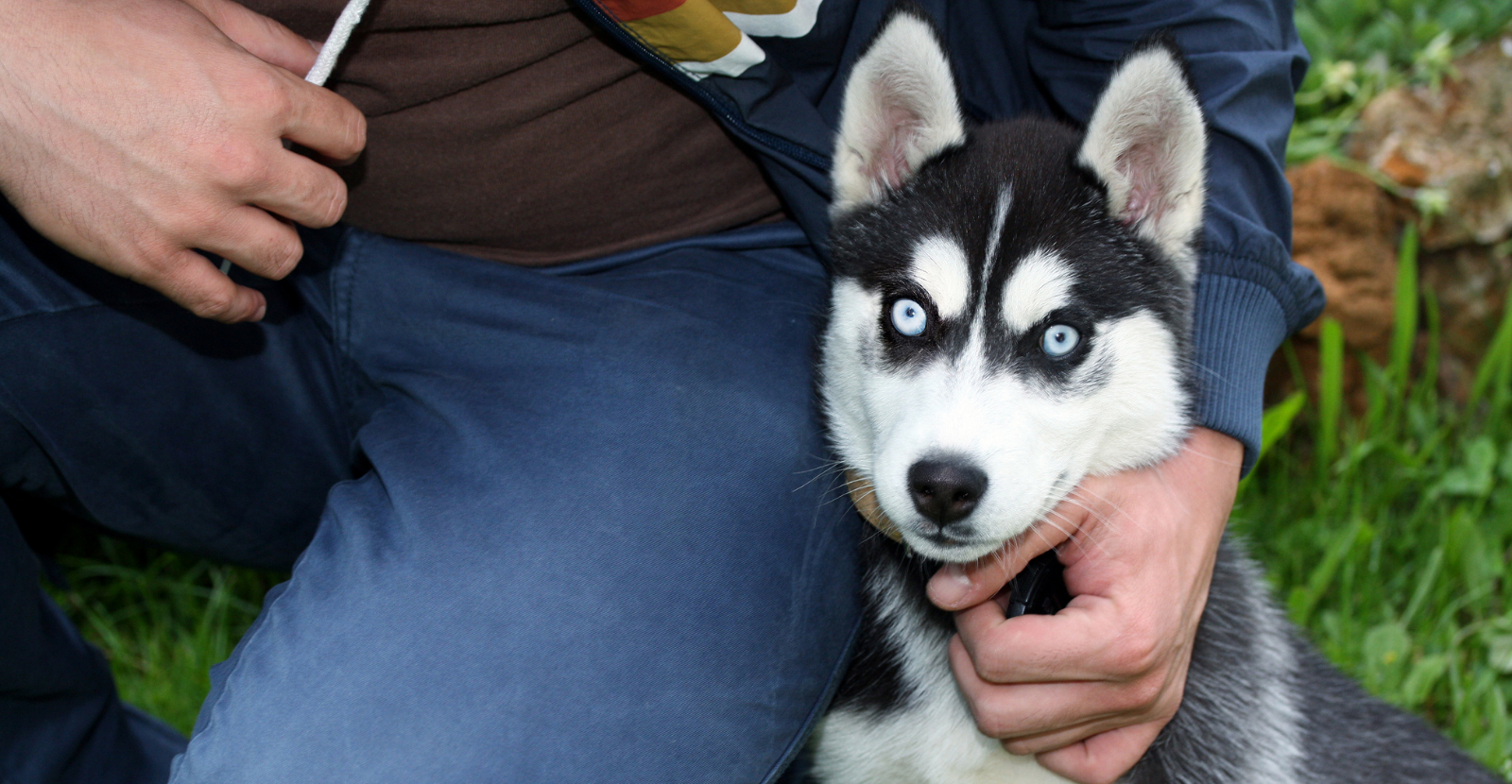
Good-natured outlook on life.
Huskies are known for being extremely affectionate towards their family. While Huskies can be look intimidating, the reality is they are more friendly dogs than guard dogs. They may look intimidating, but you will rarely see a Husky as a guard dog. They are generally very happy dogs and enjoy any amount of exercise. From a quick jog to a brisk walk, these active dogs do best with active families.
The Husky Howl.
Part of their fun-loving personality is that the Husky will have conversations with you. They have quite a howl and are known for making all sort of sounds as if they are talking to you. Their howl is very distinctive, which emulates that of the wolf. Depending on the location, you can hear a Husky howl up to 10 miles away! This adorable video is of Akela showing off his vocal cords.

Hard working dogs.
Siberian Huskies are the classic sled dog that most people envision when they think of sled dog teams in the Iditarod and for their many parts in show business as part of Hollywood. They are hard working, trainable dogs that can accomplish a lot more than typical breeds. They don't need to work this hard as part of your family, but they do know how to pull their share, which makes them a great addition to families.
History

According to the AKC, the Siberian Husky’s ancestors were originally bred to be a sled dog by the Chukchi tribe, near – yep, you guessed it – Siberia. Nearly 3,000 years ago, this tribe depended upon these dogs for transportation to expand their hunting grounds. These sled dogs took their hunters through the vast, barren areas of Siberia in search of game. Their thick coats helped them withstand the frozen land in sub-zero temperatures. Because of the location, these dogs were isolated from others and the tribe kept them pure in breed for many generations.
Siberian Huskies arrived in Alaska at the turn of the 20th century to compete in sled races. But Huskies became known when they received worldwide recognition during the legendary "Serum Run." This happened when a legendary musher Leonhard Seppala led a relay of Siberian Huskies to travel over 600 miles in only five and a half days to deliver a lifesaving serum to Nome, Alaska to combat an epidemic of diphtheria. The thrilling event was reported in newspapers around the world and it won the breed a popularity of strength and nobility that is unrivaled to this day.
Balto, who was Seppala’s lead dog on the final leg of the journey, remains one of the most honored hero dogs in canine history. There is even a statue of him which stands in New York City’s Central Park.
Breed Standards
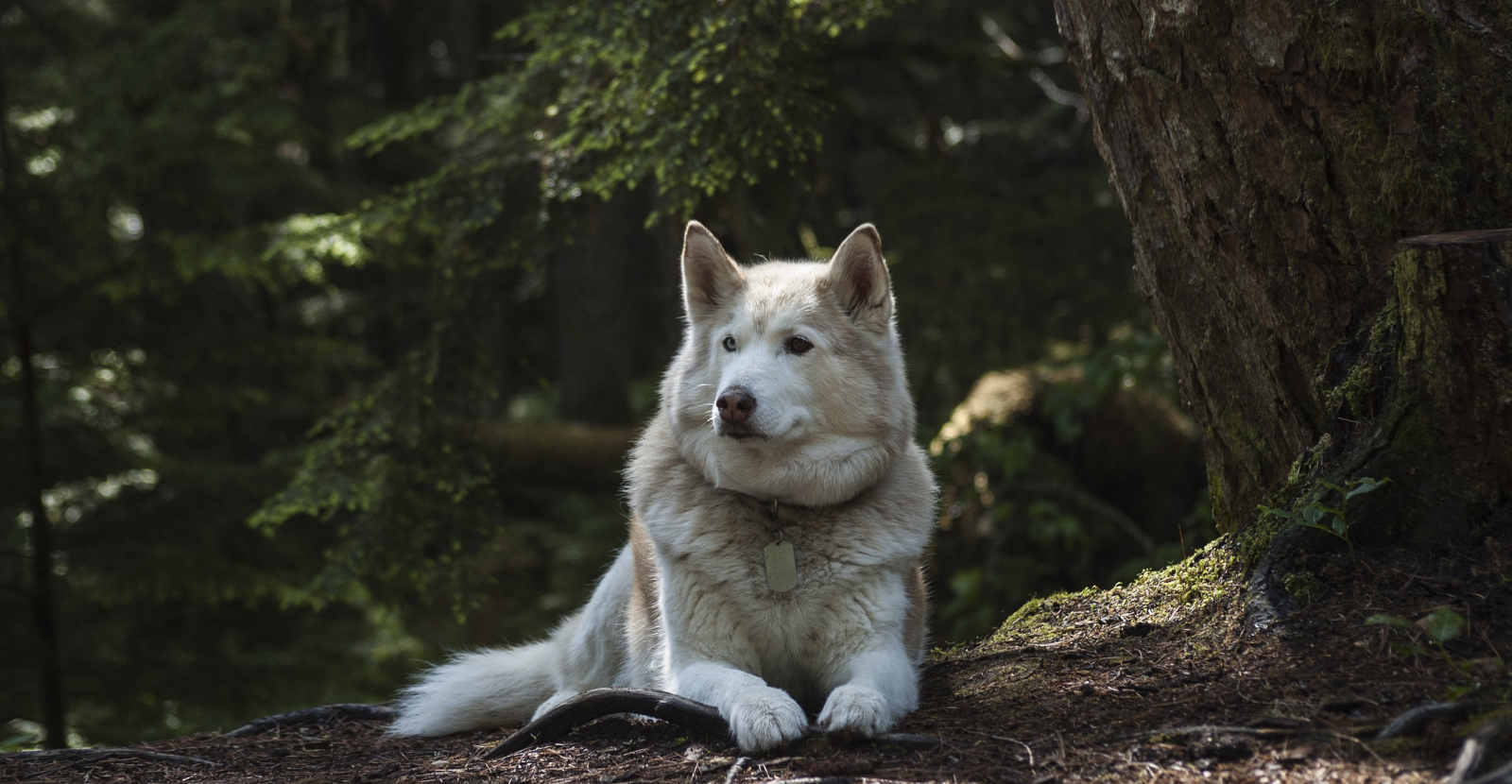
- AKC Breed Popularity: Ranks 14 of 196
- Height: 53 - 58 cm and up (male), 50 - 58 cm and up (female)
- Weight: 20 - 27 kg (male), 15 - 23 kg (female)
- Life Expectancy: 12-14 years
- Group: Working Group
We often think of thick gray and white, or black and white coats when we think of Siberian Huskies, but the colors of their coats can vary greatly. According to the The AKC acknowledges the Huskies' coats to be one of six colours: black, agouti, gray, red, sable, and white.
Facts About Huskies:
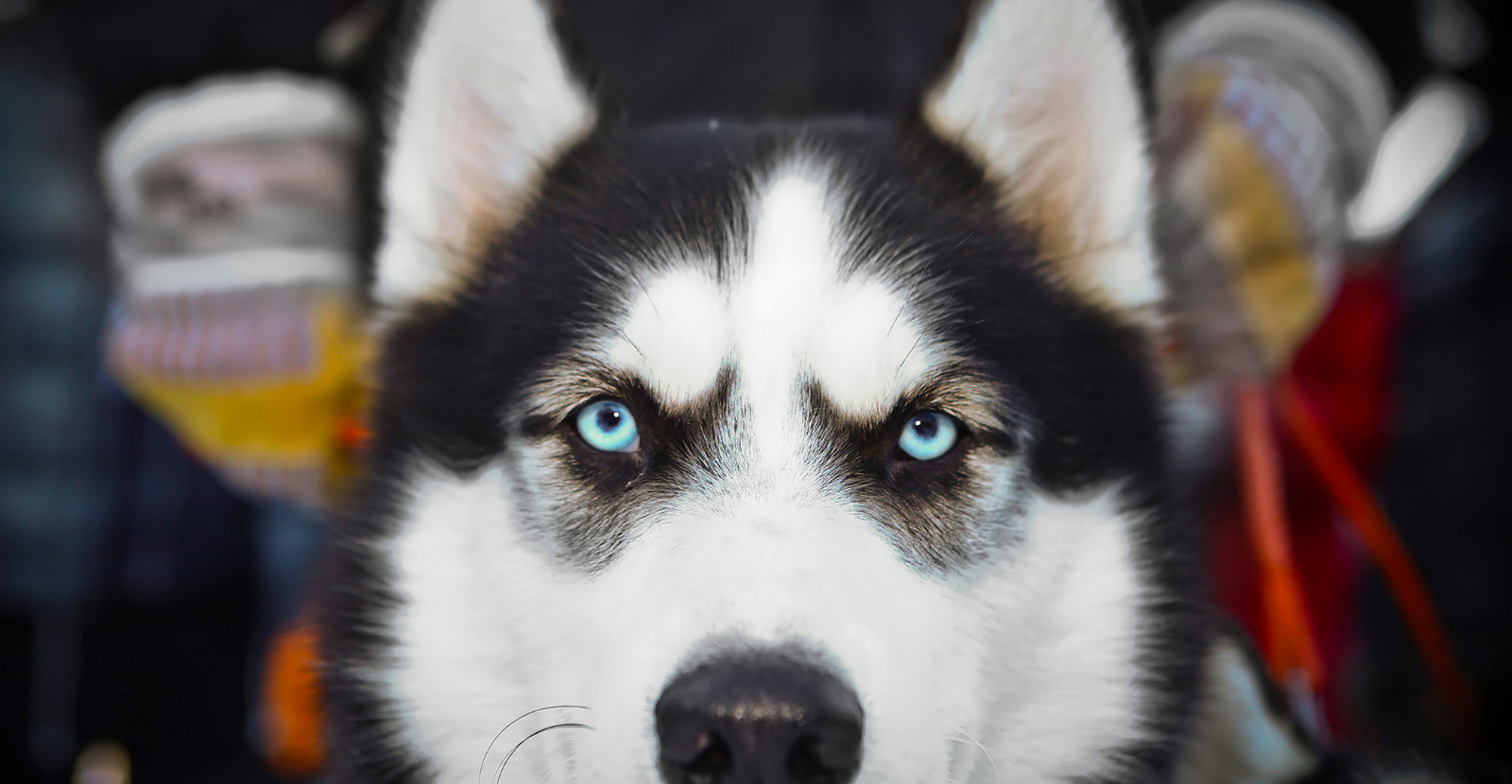
Why do Huskies Have Blue Eyes?
According to a study conducted with over 6,000 dogs, Husky dogs have very blue eyes because they possess duplicated canine chromosome attributed to piercing blue eyes. The lucky "chromosome 18 carrying a tandem duplication near the ALX4 gene is strongly associated with distinctive eye color." The ALX4 gene is important when it comes to eye color in mammals. This is found in the Husky, as well as some Australian Shepherds. Siberian Husky dogs have piercing blue eyes or "heterochromatism" (one blue, one brown eye) as a dominate trait. Whereas blue eyes are a rare and recessive trait in breeds like the Border Collie, Welsh Corgi and Old English Sheepdogs. This study is the first consumer genomic study conducted in animals and the largest genomics study ever conducted in dogs.
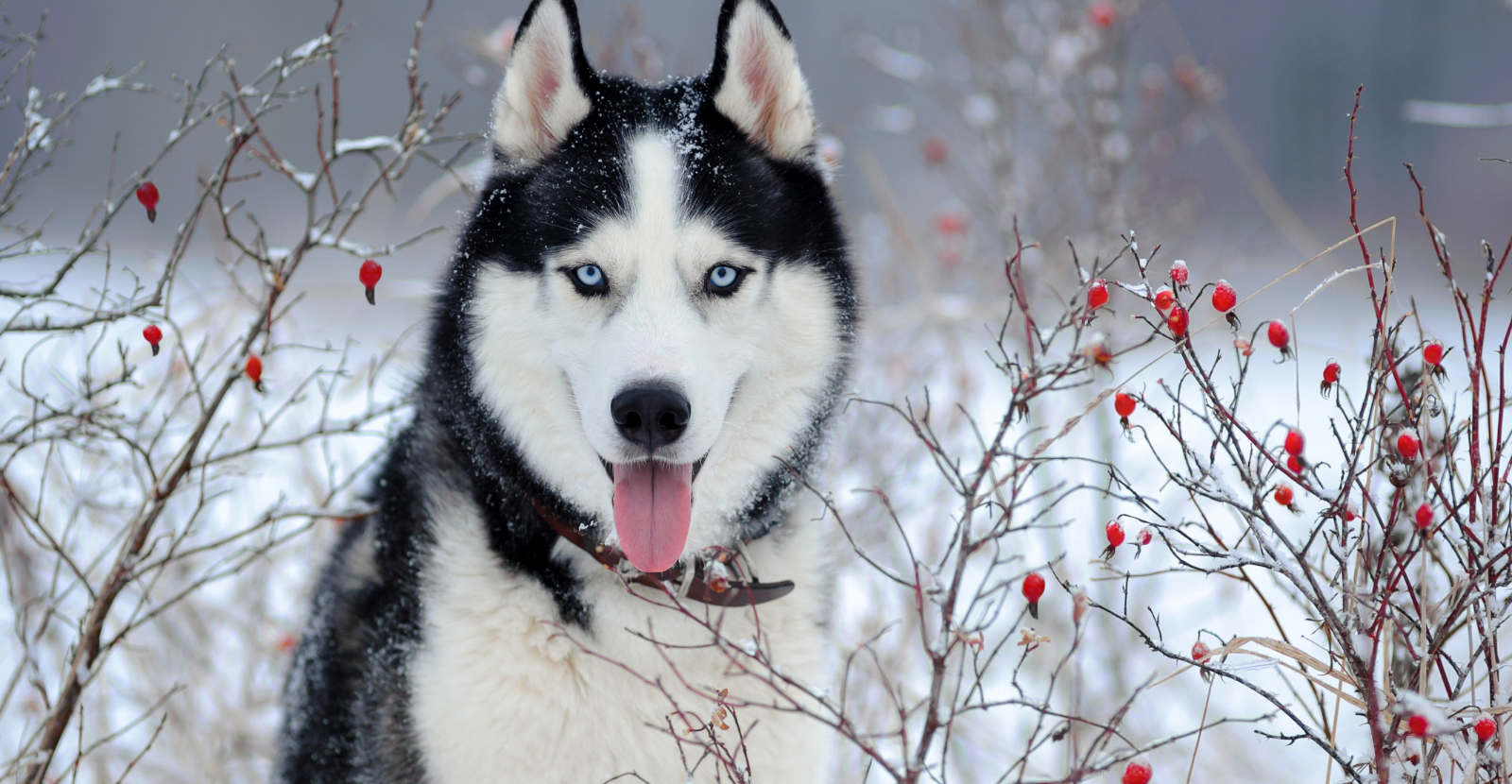
Are Huskies Related to Wolves?
While Siberian Huskies do resemble wolves, they are not related to this species. Dogs are dogs, some might say. Siberian Huskies have more in common with their cousin, the Alaskan Malamute.
Has a Husky Ever Won Best of Show at an AKC Event?
Before this year, the Siberian Husky was one of roughly 20 breeds to only win the coveted Best of Show from AKC. Amazingly, that changed when the breed won its second title in 2020. In February, a Siberian Husky won the Best of Show title at the coveted AKC Beverly Hills Dog Show. Nick the Husky beat out hundreds of dogs in the 165 different breeds in attendance to compete in the winner's circle. The only other time a Siberian Husky won the title was in 1980. This was definitely something to celebrate!
Top Health Problems of Siberian Huskies
Siberian Huskies are generally healthy dogs. You can attribute it to their ancient breeding history that kept them in tip top shape. They are very active, and their metabolism is remarkable. Husky’s are the only dog breed that can run for hours and hours while reserving their fat storage so they do not become fatigued. This, and their thick fur coats, made them adaptable to extreme cold temperatures.
That said, there are some illnesses found in Huskies, such as:
- Canine Hip Dysplasia. Do not be alarmed as this is one of 114 known breeds that get hip dysplasia. There will be joint problems arise, especially in the hip and elbow joints. This causes pain and impacts their mobility. It can be mild or extreme, needing attention.
- Osteoarthritis, or arthritis. Because of the natural ability to run distances, joint problems can arise, making Huskies at very high risk for osteoarthritis. Arthritis is as painful for dogs as it is for humans. And just like humans, there is something you can do about it. Learn more about arthritis in dogs and check out all the risk factors.
- Eye Defects. These beautiful dogs and their beautiful eyes can have problems. The most common eye problem is cataracts, which can come through a breeding line. If you are getting your Husky from a breeder, you can ask if the parents were tested and what the results were. Unfortunately, Huskies can also suffer from retinal separation. Signs include painful, red eyes. Visit your veterinarian for anything you suspect with your dog’s eyes as it could lead to damage, and even blindness.
Protection and Prevention Key to Husky’s Health
As most of the of the Siberian Husky’s health problems are joint-related, plan to do what you can to protect and strengthen their joints safely and naturally by adding a joint supplement to their diet. Joint supplements can promote joint health and cartilage development which keep dogs active and youthful, longer.
Glyde™ Mobility Chews
Parnell Living Science are the experts on osteoarthritis (OA) or arthritis in dogs and cats. We created a unique formula with key anti-inflammatory ingredients to combat the signs of aging. Glyde uses natural, gluten-free ingredients to promote healthy joints to let your dog do everything he or she loves to do! Glyde is the only nutraceutical that contains proven levels of three key components that work to relieve the painful signs of arthritis.
Glyde's proven formula has all-natural ingredients and high levels of glucosamine and chondroitin, plus Green Lipped Mussel (GLM). The proven levels of these key ingredients are what makes the formula unique:
- New Zealand Green Lipped Mussel (GLM): A powerful anti-inflammatory
- Glucosamine: Reduces cartilage degradation
- Chondroitin Sulfate: Helps rebuild cartilage
This is why our newest member of the Parnell Living Science family, Akela, who we introduced you to at the beginning of this article, is currently take Glyde® Mobility Chews. Many large dog breed families use Glyde as a preventative even at a young age. The best thing about Glyde, is it is a supplement to their diet, so it they can take without a prescription. If you haven't started your Siberian Husky on Glyde yet, it's never too late to start. It will help them keep their youthful mobility even as they age.



